CAN PRESIDENT TRUMP DEFEAT VICE- PRESIDENT BIDEN IN THE 2020 PRESIDENTIAL ELECTION?
The probability of president trump winning the 2020 election is about thirty percent. That means his chance of winning the election is lower than that of vice president Biden. Polls do not necessarily determine who wins the election. What determines the winner is who turns out to vote on election day and which of the candidates most of those voters vote for.
President Trump and Vice President Biden
By Henry Aladiume
There is no doubt that
President Trump has been a very consequential President. He made a lot of
strategic and valuable policy decisions on the economy, domestic policy,
foreign affairs and military which gave the United States a more vibrant and
buoyant outlook in his first term in office. However, in the run up to the 2020
presidential election every major media outlet on the left and right of the
political spectrum suggest that Trump may lose the 2020 presidential election.
There are many reasons
why that may be the case, some of which include the fact that many Americans
think his handling of the corona virus pandemic left much to be desired. The
fact is that 200,000 people have died in circumstances that many Americans
think could have been avoided. That singular issue could be the reason Trump
may lose the election.
In addition, we know
that the Corona virus pandemic came from China, but it has caused economic
crisis around the world. That economic crisis has created business failures,
misery and high unemployment. In most elections a president who is in office at
the time of economic recession never gets re-elected. That is the conundrum
that President Trump is in. In the run up to the 1992 elections President H.Bush entered
the election with sky high approval ratings. But he lost to a young Governor know as William Jefferson Clinton over issues related to domestic policies especially the
economy.
In addition, money is a
major factor in American elections and winning the election requires access to
a of lot funds. Obama’s 2008 victory was partly attributable to the fact he out-raised John McCain in the money game. In 2008 President Obama raised and spent over $550 million dollars
to McCain's approximately $110. That was in addition to money brought it by
outside groups. As result Obama eclipsed McCain in advertising and
communication spend and consequently Obama bombed him out of the money race and
he lost.
In the 2018 midterm
elections Republicans lost over forty seats in that contest; lost the house and
Nancy Pelosi consequently became speaker again for a second time. Part of the reason was that Republicans
were outspent by Democrats in many cases in the ratio of five to one. In 2018 ,billionaires like Bloomberg, Soros and Steyer pumped nearly $300 million into
the democrats campaign and that led them to outspend the Republicans
;drowning, overcoming and overwhelming them.
In the 2020 election
the Trump campaign is running behind on the money race because, Biden is now beating them.As a result the Trump campaign is pulling advertisement in states that they
should ordinarily be competing in, because of scarcity of funds .That funds
scarcity could reduce their ability to reach voters and a loss of the election
in some key states.
In addition,
Republicans have lost the popular vote in six of the last seven presidential elections.
That comes from the fact that the changing demographics or the browning of
America favors democrats. As a result Republicans are finding it more difficult
to win elections. Trump lost the popular vote by three million. With the
aforementioned trend, President Trump's chances of winning is slim.
In addition, in America
95% of black Americans vote for Democrats;70% of Spanish/Jews/Asians vote for
Democrats and about 45% of white people vote for Democrats. So how do
Republicans and Trump win? It is very tough. Also, with the electoral vote
model Democrats have a lock on two of the states that have some of the largest
electoral votes (New York -29) and (California- 55).
Consequently, starting out Democrats have a better chance of winning in any presidential election year.
The other large state Texas with 38 electoral votes is controlled by Republicans.The
fact is that massive immigration from Latin America to Texas is changing the demographics of the state and there is a chance Democrats could win it this cycle.
If that happens President Trump will kiss his re-election election goodbye.
Furthermore, unlike in
2016 President Trump now has a record. Most of it is tied to how he managed the
corona virus pandemic and many people are unhappy with how it turned out.
Without the pandemic Trump would have coasted to victory but the pandemic
changed the calculus. Before the pandemic the economy was roaring on all
cylinders and Trump was riding high, but the pandemic has put his credibility
on the spotlight.
To win the 2020
election President Trump has to over perform among non-white college educated voters;
black men, white women and college educated whites. If that does not happen he may lose. The fact is that the current situation has put President Trump’s
election chances in jeopardy.The truth is that his chance of winning is now
more remote. However, some people suggest that the polls today may be wrong as
they were in 2016.
The fact is that the
projections from the different state polls may have been wrong in 2016. But the
national polls were not wrong as they consistently showed Hillary winning. As
the polls projected in 2016 Hillary won about 65 million votes to Trump’s 62 million votes.
Trump lost the popular vote by 3 million in 2016. Trump however, won the electoral vote
in 2016 by a margin of 306 to about 227 largely by a 200,000 vote margin in
Wisconsin, Pennsylvania, Michigan and Ohio. The fact is Trump could win in 2020, but the probability is lower than in 2016 and in the match up against Biden in 2020.
The polls are a
snapshot in time, but do not and cannot predict who eventually turns out to vote.
The dynamics of this year’s election is different .This is because the calculus has
changed from 2016. Again, President Trump could win if his supporters turn out to vote in
numbers that overwhelm the opposition.
https://www.theinsightpost.com
News.Features.Analysis
 |
| Cross Section of Nigerian Women From Different Tribes |
 |
| Map of Nigeria |
The Lagos ,Nigeria Skyline
The Global Economic/Political Realities Of The Corona Virus Pandemic
Will Texas Become A Purple State ?

Rush Limbaugh Is An Embodiment of The American Spirit of Innovation
 |
| Rush Limbaugh,The Number Radio Talk Show Host In America |
 |
| Mr.Rush Limbaugh Receives The Medal of Freedom From First Lady Melania Trump |
Is CNN’s Anti-Trump Posture A Sign Of Its Liberal Bias?
John Stankey,Warner Media CEO
Henry Aladiume Reports
CNN gained respect and popular acclaim in the 1980's for its extensive live reporting of news around the world from a fair, accurate, balanced, factual and truthful perspective. However, since the late 1990’s CNN has been unable to find an answer to the aggressive leftist news philosophy of cable news rivals like MSNBC and the rightward tilt of Fox news (the most watched network in cable news in America).CNN's answer to the competition has been to claim that editorially they are in the middle, neutral but truthful.
Detaining refugee children at military bases may sound un-American, but it's been done before
CNN gained respect and popular acclaim in the 1980's for its extensive live reporting of news around the world from a fair, accurate, balanced, factual and truthful perspective. However, since the late 1990’s CNN has been unable to find an answer to the aggressive leftist news philosophy of cable news rivals like MSNBC and the rightward tilt of Fox news (the most watched network in cable news in America).CNN's answer to the competition has been to claim that editorially they are in the middle, neutral but truthful.
Detaining refugee children at military bases may sound un-American, but it's been done before

Children line up to enter a tent at the Homestead Temporary Shelter for Unaccompanied Children in Homestead, Fla., Feb. 19, 2019.
AP Photo/Wilfredo Lee
Jana Lipman, Tulane University
Fort Sill, an army base in Oklahoma, will soon become a refugee camp. The Department of Health and Human Services expects the repurposed military facility to house up to 1,400 unaccompanied migrant children from Central America by early July.
Border agents apprehended 54,000 unaccompanied child migrants at the Mexico border last year alone. Typically, the government houses such children in temporary shelters and then places them with relatives already living in the United States. This means children can live with family and communities, rather than protective custody, as they wait for their asylum hearings.
This isn’t the first time the U.S. has housed kids at a military base, though. Fort Sill was used by President Barack Obama’s administration to shelter 1,800 Central American migrant children for four months in 2014.
Although the country hasn’t often had to cope with so many unaccompanied child migrants, my research on refugee camps in America reveals that the U.S. government has repeatedly turned to military bases to shelter unexpected – and often undesired – migrant populations. At different times throughout the 20th century, the federal government kept groups of people from Hungary, Vietnam, Cuba and Haiti on U.S. military bases.
The result can be either efficient immigration processing or a prolonged, confined and traumatic experience. It all hinges on the federal government’s refugee policy, its commitment to resettlement and on broader American views of the migrant population housed at the base.
1975: Vietnamese arrive to Fort Chaffee
Fort Chaffee, in Arkansas, is an informative example of the outside influences that can help or hurt the success of refugee camps in the U.S.
Established in 1941 as a military training camp, Fort Chaffee gained importance after the final U.S. withdrawal from Vietnam. It was one of several military bases selected to receive 120,000 South Vietnamese fleeing their country as the North Vietnamese marched into Saigon.
In April 1975, approximately 50,000 Vietnamese arrived in Fort Chaffee.
Then, as now, the sudden arrival of so many foreigners divided Americans. Some felt generosity and compassion toward the Vietnamese migrants; others expressed anti-refugee sentiments and fear of invasion.
“The people of Arkansas might as well realize what they are sacrificing, bringing these people over to this fertile country,” wrote one local man to Arkansas’ Southwest Times Record on May 4, 1975. “The day will come when there will be booby traps in the Ozarks.”
The letter writer, a Vietnam War veteran, saw the Vietnamese at Fort Chaffee as his enemy – not as U.S. allies who faced reprisals as a result of the United States’ war.
“[W]hen I went over there … I was going to keep them from getting closer to the United States,” he wrote. Instead, he added, “they almost beat me back here.”

The South Vietnamese migrants housed at Fort Chaffee were resettled quickly.
Online Archive of California
Ford welcomes the Vietnamese at Fort Chaffee
President Gerald Ford and American military leaders felt responsible for their Vietnamese allies displaced by the U.S. war.
The federal government admitted Vietnamese outside regular immigration channels and worked to resettle them in the United States. Ford even visited Fort Chaffee to greet the new arrivals in August 1975.
“It’s really inspirational to see so many young people, old people and others getting an opportunity to be a part of America,” he said. “We’re proud of them and welcome them all here.”
Fort Chaffee offered English classes, basic cultural orientation lessons and spaces for religious worship to the Vietnamese held there. And the U.S. military worked with volunteer agencies to ensure they were quickly sponsored and resettled.
By December 1975, less than a year after their arrival, all 50,000 Vietnamese were living outside the base.

Vietnamese boys play soccer at Fort Chaffee, Ark., in 1975.
Online Archive of California
1980: Cubans harassed at Fort Chaffee
The base would be full of migrants again soon enough.
In 1980 approximately 100,000 people fled Cuba when President Fidel Castro – facing internal domestic pressure – briefly allowed people to leave the communist island from the Mariel Port.
Cubans from the Mariel Boatlift were more likely to be working-class and Cubans of color than the generation who fled after the 1959 Cuban Revolution. Along with political dissidents and those seeking better economic opportunities, Castro also forced “undesirables” off the island, including those deemed to be criminal, mentally ill or gay.
By flooding American shores with these highly stigmatized Cubans, Castro created a political problem for President Jimmy Carter.
Carter believed the U.S. had an obligation to “provide open heart and open arms to refugees seeking freedom from Communist domination and economic deprivation.”
But many Americans saw the new arrivals as dangerous and unwanted.
Bill Clinton, then the governor of Arkansas, warned federal officials that sending Cubans to Fort Chaffee would be unpopular and possibly volatile.
He was right. In May 1980, locals from around Fort Chaffee met the approximately 20,000 Cubans who arrived there with hostility. Ku Klux Klan members even protested outside the base and “rant[ed] about white power,” according to a 1980 People Magazine article.

Cubans line up for processing before being sent to Fort Chaffee in 1980.
AP Photo/Paul Vathis
The Cubans sent to Fort Chaffee also resented their detention in what one government official called “a concentration camp atmosphere.” On June 1, 1980, hundreds of them protested and burned down base buildings. Many then walked off the base toward town.
The Cubans threw rocks and bottles, and fighting broke out. Dozens of Cubans and Arkansas state troopers were injured.
Since it was difficult to find sponsors for many of these Cubans, hundreds stayed at Fort Chaffee much longer than the Vietnamese – in some cases over a year.
Over time, life at the military base became more restrictive.
“It’s hard to describe the place as something other than a prison,” the Boston Globe reported in 1981. “There are guards, fences; Cubans can’t leave the perimeters.”
The roughly 400 Mariel Cubans who had not found sponsors by February 1982 were transferred to federal prisons. Some were later released; many others languished in prison in legal limbo.
Refugee camp or military prison?
The history of Fort Chaffee shows that it’s risky to house refugee populations on a military base.
Executed with compassion and the promise of resettlement, it can facilitate shelter, social services and a quick transition.
Done badly, when anti-refugee sentiment is high, a military base can become prison-like – a place where migrants are confined behind barbed wire, with unknown release dates.
The Trump administration’s stated policy toward refugees is to deny them asylum and deport them as soon as possible. That includes children.
It is unclear whether the young migrants sent to Fort Sill will have access to lawyers, education or social services.
In this political context, warehousing children at a military base seems ripe for lawsuits, unanticipated consequences and trauma for the children trapped there.
[ Deep knowledge, daily. Sign up for The Conversation’s newsletter. ]
Jana Lipman, Associate Professor of History, Tulane University
This article is republished from The Conversation under a Creative Commons license. Read the original article.
The Constitution dictates that impeachment must not be partisan
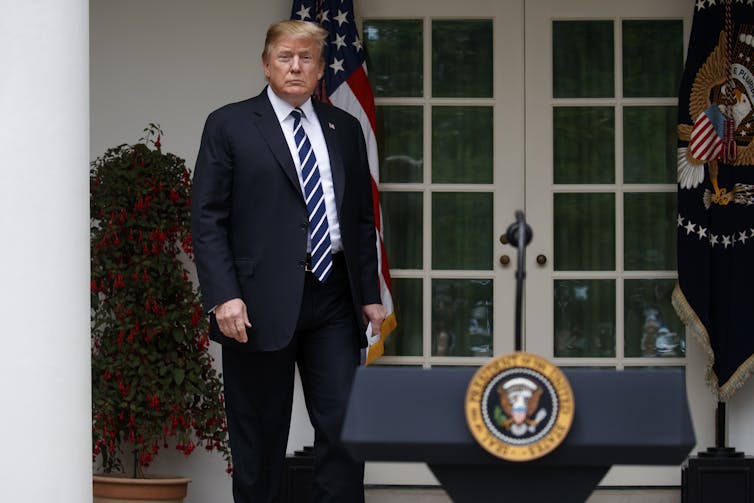
President Donald Trump arriving at the Rose Garden, May 22, 2019, in Washington.
AP/Evan Vucci
Peter Brandon Bayer, University of Nevada, Las Vegas
Barely two decades since the impeachment of Bill Clinton, the people of the United States again are confronting the possibility that their president, now Donald Trump, could be impeached, meaning charged by the House of Representatives with offenses that, if proved in a Senate trial, would remove him from office.
Not surprisingly, politics have pervaded the debate.
Many, perhaps most, assume that impeachment of a president should be, or inevitably will devolve into a political melee. The few historic examples that exist show political motivations – to varying degrees – in the impeachment proceedings against Presidents Johnson, Nixon and Clinton.
Democratic House Speaker Nancy Pelosi told The Washington Post in March that “impeachment is so divisive to the country that unless there’s something so compelling and overwhelming and bipartisan, I don’t think we should go down that path.”
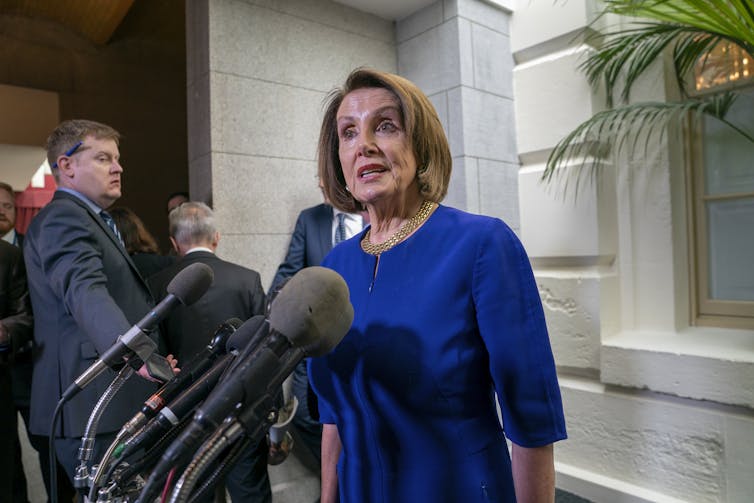
House Democratic Speaker Nancy Pelosi, who is against impeaching the president.
AP/J. Scott Applewhite
Most Democratic leaders don’t want impeachment, at least at this point, fearing a political backlash in 2020 if they pursue impeachment. Some believe that if impeached in the House and tried and acquitted by the Senate, Trump’s political popularity will skyrocket like Bill Clinton’s did after his impeachment in 1998.
Nonetheless, impeachment supporters in the House now number, according to The New York Times, “roughly two dozen.” House and Senate Democratic leaders are facing increased calls by a growing number of colleagues to begin formal impeachment proceedings against President Trump.
To date, only one Republican has joined the chorus, Michigan Rep. Justin Amash.
Other Republicans – supporters of President Trump – accuse Democrats of using impeachment to overturn the 2016 presidential election.
Politics now characterize the serious issue of whether Trump has obstructed justice and committed other offenses worthy of his removal from office.
As a scholar of law, I believe that under our Constitution, impeachment – or the decision not to impeach – must not be based on partisan considerations.
Rooted in the Constitution
Some advocates of impeachment have recognized the correct basis to decide whether Congress should investigate and impeach President Trump.
Rep. Mary Gay Scanlon of Pennsylvania announced in a May 21 press release, “We took an oath to uphold our constitution and the President’s efforts to cover up his acts, and those of his campaign and administration, threaten the foundation of our democracy.”
Similarly, Sen. Elizabeth Warren, D-Mass., a Democratic candidate for president, urged that based on their oaths to safeguard the Constitution, the House of Representatives has an affirmative duty to begin a full impeachment investigation.
Leaving aside whether the present record supports an impeachment inquiry against Trump, I believe Warren and Scanlon are right that the decisions whether to impeach and possibly remove any president from office should be rooted in the Constitution itself.
Corrupting the office
The Constitution gives the House of Representatives sole power to impeach, meaning to formally charge that the president (or other federal “Officer”) has committed offenses worthy of immediate removal from office.
The Senate conducts the impeachment trial. A conviction requires a super-majority of no less than two-thirds of all senators.
The Framers decided that power as drastic as removing a sitting president should belong to Congress, the branch of government most closely associated with the will of the people.
Rather than leaving impeachment to the Supreme Court or other small, unelected body, impeachment becomes the tool of the national will – not a political will, but rather the national will to respect the Constitution’s neutral legal requirements.
Of course, as the Framers well knew, by its very nature Congress would be, and indeed is, politically partisan. Voters elect members of Congress to enact laws based on those voters’ policy preferences. Inevitably, laws favored by the “majority” may frustrate or even hinder voters whose candidates lost.
Such is the normal “give and take” of democracy.
However, the Constitution clarifies that regarding impeachment, Congress cannot conduct business as usual. Like declaring war, impeachment is one of the rare matters where politics should be utterly inappropriate.
The Constitution’s Article II, Section 4 commands that a president may be removed from office only for “Conviction of, Treason, Bribery, or other high Crimes and Misdemeanors.”
Accordingly, Congress must base its decisions whether to impeach and to remove a president from office on a factual, politically neutral record demonstrating whether the president actually has committed, in the Constitution’s language, “Crimes.”
This plain text tells us that impeachment is not a device by which a disgruntled Congress may negate the voters’ political choice, even if Congress honestly believes a duly elected president’s policies are unsound, reckless or dangerous. Rather, Congress must approach the matter whether a president has committed constitutional “Crimes” as if it were jurors in a courtroom.
Commentators, then, rightly have denounced the seemingly political nature of Clinton’s impeachment and, roughly 130 years earlier, the impeachment of Andrew Johnson.
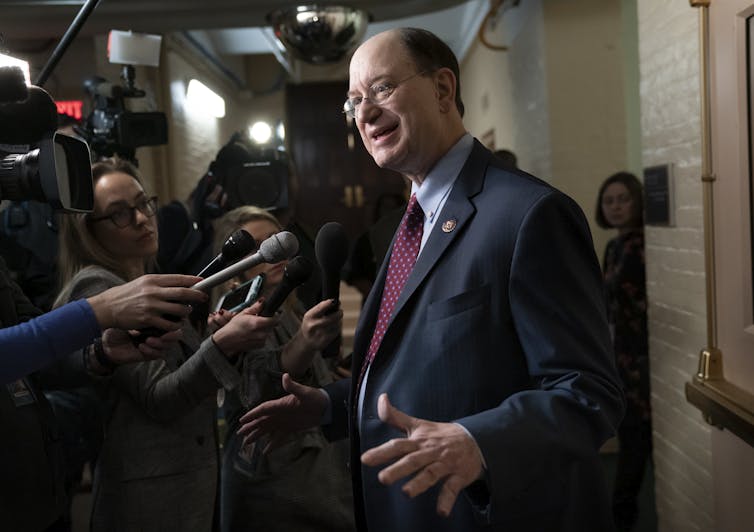
Rep. Brad Sherman, D-Calif., introduced articles of impeachment against President Donald Trump on Jan. 4, 2019, the Democrats’ first day in power after the 2018 elections.
AP/J. Scott Applewhite
Offenses against the government
Importantly, history shows that the Constitution’s term “other high Crimes and Misdemeanors” is not limited to actual criminal conduct.
Noted scholars Ronald Rotunda and John Nowak explain that the Framers wisely intended the phrase “or other high Crimes and Misdemeanors” to include undermining the Constitution and similar, “great offenses against the federal government (like abuse of power) even if they are not necessarily crimes.”
For instance, Alexander Hamilton asserted that, while likely to be criminal acts, impeachable wrongdoings “are those offenses which proceed from the misconduct of public men … from the abuse or violation of some public trust.”
James Madison urged that impeachment is appropriate for “loss of capacity, or corruption … [that] might be fatal to the republic.”
And founding father Benjamin Franklin agreed that impeachment is “the best way … for the regular punishment of the Executive when his misconduct should deserve it, and for his honorable acquittal when he should be unjustly accused.”
Thus, out of respect for the democratic process, a president cannot be impeached to promote Congress’ political agenda. Nor should lawmakers avoid impeachment because of perceived political cost.
Rather, given its remarkable gravity, a president should be impeached for conduct that – if committed by any president regardless of political or party affiliations – so taints or corrupts the presidency, he or she must be removed to preserve the integrity of American government.
Thus, the standard for impeachment must be politically neutral. Otherwise, impeachment becomes an illegitimate device to overturn elections.
Peter Brandon Bayer, Associate Professor of Law, University of Nevada, Las Vegas
This article is republished from The Conversation under a Creative Commons license. Read the original article.
TV streaming titans are locked into a real-life Game of Thrones – here's a way around this fight to the death
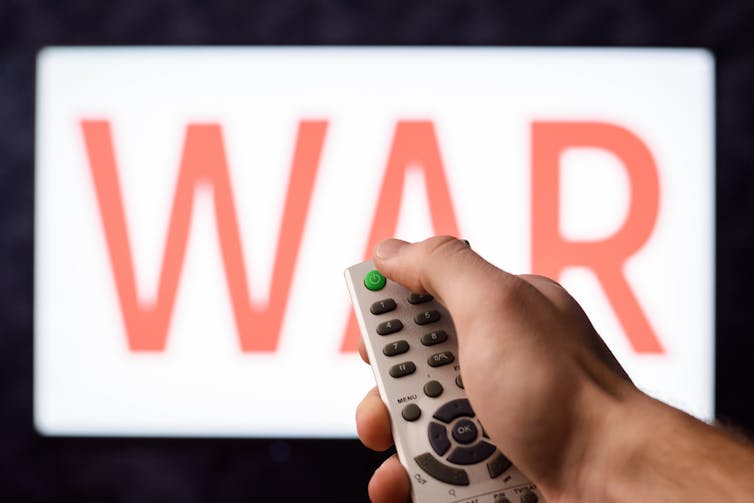
Let battle commence.
Vitalii Petrushenko
Michael Wade, IMD Business School
American retail giant Walmart is becoming the latest challenger to clamber into the ring and take on the reigning TV/movie streaming heavyweights with original material.
At a press conference in New York, Walmart announced a slate of new commissions for its streaming contender, Vudu. Added to the 100,000-plus TV shows and movies already available on the service, viewers can expect the likes of Friends in Strange Places, a travel/comedy series overseen by Queen Latifah; interview documentary strand Turning Point with Randy Jackson; and a series-length reboot of 1983 Michael Keaton comedy Mr Mom.
The new offering is aimed primarily at Middle America, which Walmart feels has been undersold by streaming incumbents like Netflix and Amazon Prime Video. Vudu’s shows will be a vehicle for new interactive advertising going live over the summer which will allow consumers to buy what they see without leaving their sofa. Thanks to its monster customer database, a senior Vudu manager recently described Walmart as the “sleeping giant of the digital entertainment space”.
If so, it’s about to wake up to a very crowded marketplace. It’s only weeks since Apple announced streaming service Apple TV+, which is to combine licensed shows with original programming when it launches worldwide this autumn.
Disney, meanwhile, is following suit with Disney+ in November – initially in the US, then rolling out to other countries next year.
Other existing streamers include Hulu and HBO Now, while Discovery and NBCUniversal are both launching rivals next year as well (click on the table below to make the full details bigger). Between them, these companies are spending many billions of dollars on content. It doesn’t take a seer to predict that a good few will likely fail.
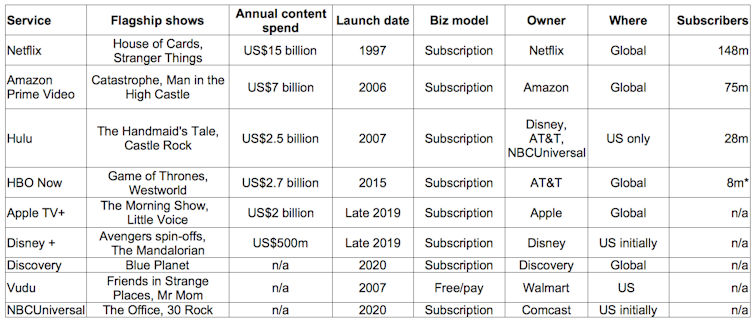
*US subscriptions only.
Sizing them up
Among these newer announcements, Apple and Disney look the stronger contenders. Apple has the ready-made platform of a billion devices to promote and deliver its service, while Disney has the richest content portfolio across multiple categories – from video games to live sports to superheroes.
Vudu may have the heft of Walmart behind it, but the content investment is likely to be a fraction of the other two: Apple has said it will spend US$2 billion (£1.5 billion) a year at first, while Disney is spending only $500m on originals, including the likes of three Avengers spin-offs, but the group’s total annual content spend is nearly 50 times bigger. Walmart has not said what Vudu is spending. On the other hand, Vudu’s offering will be mostly free while Disney+ and Apple TV+ will both charge monthly subscriptions.
At any rate, all three are likely to struggle – and the same goes for the other new arrivals. We are heading for a serious case of “subscription fatigue”. When consumers watch free-to-air television, broadcasters take care of the messy process of making deals with content owners, aggregating it and serving it up. As pay-TV operators like Sky or the cable networks started to emerge, consumers had to sometimes choose a package to get a particular channel or programme.

They have been warned.
diy13
But with streaming in future, this experience is going to become more and more frustrating – Where can I find Westworld? Where is Blue Planet these days? – not to mention expensive for anyone tempted by multiple offerings. By building competing services, all these media giants are playing their own Game of Thrones.
The fix
The way forward is clear, but controversial. Apple, Disney, AT&T, NBCUniversal and the other large players should collaborate to create a dominant content platform. Partnering among subscription services would take some of the burden off consumers and make the combined offering more appealing than existing options. Imagine subscribing to a single service to receive access to everything from classic TV and movies to the latest shows. The market can probably handle two or three mega platforms, but not more.
Ironically, Disney already has a ready-made option in its arsenal. Hulu was set up as a joint venture between Disney, NBCUniversal, Fox and WarnerMedia (now owned by AT&T). Yet Hulu’s claim to be a cross-industry platform is getting weaker, not stronger: Fox’s 30% share defaulted to Disney when it was taken over, and AT&T has announced it wants to sell its 10% holding. Hulu may have recently diversified with its recent partnership announcement with music streamer Spotify, but Disney’s new dominance of the service will probably make it a less attractive option for other media companies to buy into than previously.
If media companies collaborated with their streaming services, it would certainly come with antitrust concerns. But unless they evolve into an industry platform soon, the door will open for other players to take the lead – I’m thinking digital giants like Google or Facebook, internet service providers or telecommunications companies.
Many of these players already have a subscription relationship with consumers, so it would be relatively easy for them to bundle video streaming into existing services. Amazon’s shift into the media world is a textbook example of how this could play out.
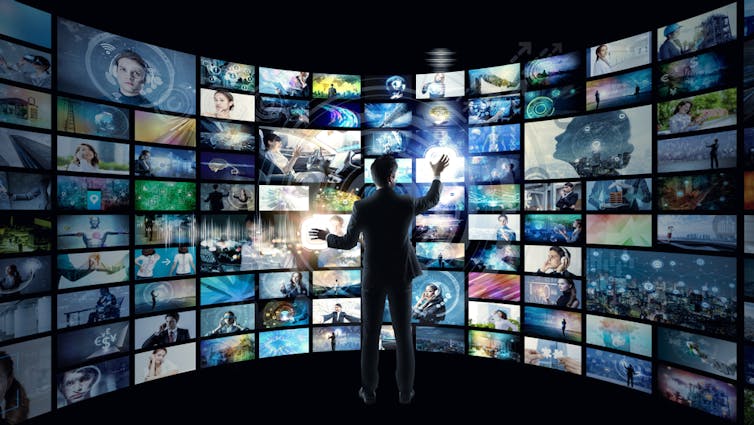
One service to rule them all.
Metamorworks
It is reminiscent of the early 2000s, in which the record majors built walled gardens around their content only to watch in horror as Apple’s iTunes stole the market from under them with a convenient, cheap and comprehensive option. Spotify then stole it again a few years later. Media companies should also beware the prospect of consumers being driven in larger numbers to illegal or quasi-legal video consolidation services.
There are recent precedents that they could follow of competitive partnering in other industries: BMW and Daimler recently announced they would join forces to build common platforms for ride sharing and electric vehicle charging, among other things, having realised they are stronger together than apart.
The media giants would be well advised to start exploring similar possibilities.
Consumers are already baulking at both the cost of multiple subscription services and the inconvenience of having to keep track of which shows are on which services. The ultimate winner will be the first option that can provide scale and convenience at a reasonable cost. If today’s streaming companies aren’t careful, they will end up on the outside looking in.
Michael Wade, Professor of Innovation and Strategy, Cisco Chair in Digital Business Transformation, IMD Business School
This article is republished from The Conversation under a Creative Commons license. Read the original article.
Who are Sri Lanka's Christians?
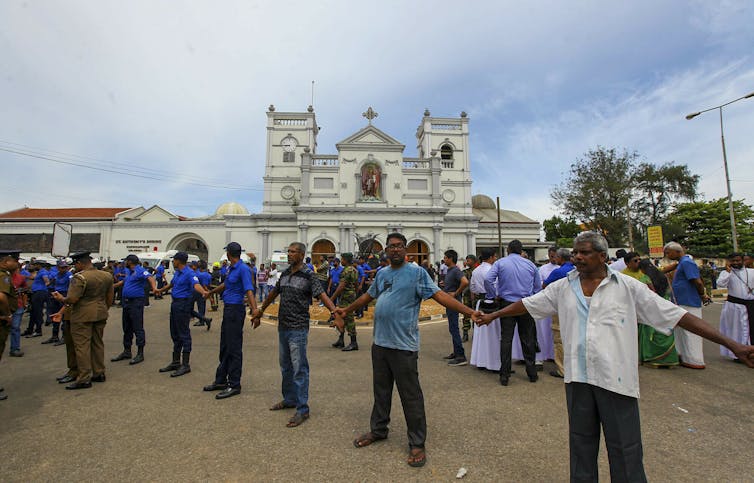
Sri Lankan army soldiers secure the area around St. Anthony’s Shrine after a blast in Colombo.
AP Photo/ Rohan Karunarathne
Mathew Schmalz, College of the Holy Cross
At least 200 people have been killed in several coordinated bomb attacks on churches and hotels in Sri Lanka on Easter.
Several Christian communities spread across the island nation were targeted in the attack: Suicide bombers detonated one set of bombs at churches in the cities of Colombo and Negombo on the western coast, home to many Sinhalese-speaking Catholics. Another was detonated in a Protestant church 200 miles away – in Batticaloa, a city in the Tamil majority eastern side of the island.
As a Catholic religious studies researcher and professor, I lived in Sri Lanka in the fall of 2013 and did research on Catholicism in both the southwest and northern parts of the country. Approximately, 7% of Sri Lanka’s 21 million are Christian. The majority of them are Roman Catholic.
Sri Lanka’s Christians have a long history that reflects the dynamics of colonialism as well as present-day ethnic and religious tensions.
Entry of Catholicism
It was Portuguese colonialism that opened the door for Roman Catholicism into the island nation.
In 1505, the Portuguese came to Ceylon, as Sri Lanka was then called, in a trade agreement with King Vira Parakramabahu VII and later intervened in succession struggles in local kingdoms. Among those converted included Don Juan Dharmapala, the king of Kotte, a small kingdom near present-day Colombo on Sri Lanka’s southwestern coast. Later, when the Dutch and the Dutch East India Company displaced the Portuguese, Roman Catholicism was revived through the efforts of St. Joseph Vaz.
Vaz was a priest from Goa, Portugal’s colony in India, and arrived in Sri Lanka in 1687. Popular folklore credits Vaz with a number of miracles, such as bringing rain during a drought and taming a rogue elephant. Pope Francis made Joseph Vaz a saint in 2015.
By 1948, when Sri Lanka gained independence from Great Britain, Catholics had established a distinct identity. For example, Catholics would display the papal flag along with Sri Lanka’s national flag during independence day celebrations. But tensions rose in 1960 when the Sri Lankan government compromised the Catholic Church’s independence by taking over church schools.
In 1962, there was an attempted coup by Catholic and Protestant Sri Lankan army officers to overthrow the government of then prime minister Sirimavo Bandaranaike, allegedly in response to increased Buddhist presence in the military.
Ethnic and religious divides
The 25-year-long Sri Lankan Civil War, starting in 1983, divided the Catholic community.
The war was fought against the government by the Liberation Tigers of Tamil Eelam, or LTTE, who sought a separate state for Sri Lanka’s Tamil community in the northern and eastern parts of the island. The rebels included Catholics in military positions. But, the Sri Lankan army also had Christian members holding leadership ranks.
Catholic bishops from Tamil and Sinhalese areas could not develop a coherent response to the conflict. They would not even agree on recommending a ceasefire during the Christmas season.
Recent years have seen the rise of militant forms of Buddhism in Sri Lanka and Christians have been among its targets. For example, the ultra-nationalist Buddhist organization, the Bodu Bala Sena (also known as Buddhist Power Force) demanded that Pope Francis apologize for the “atrocities” committed by colonial powers.
While being Catholic and being Sri Lankan are not considered to be contradictions, Catholicism in Sri Lanka still struggles with its colonial past.
Part of global Catholicism
At the same time, Catholicism has a strong cultural presence in the country.
For example, in the North, there is a large pilgrimage site, Madhu, dedicated to the Virgin Mary, which Pope Francis visited in 2015.
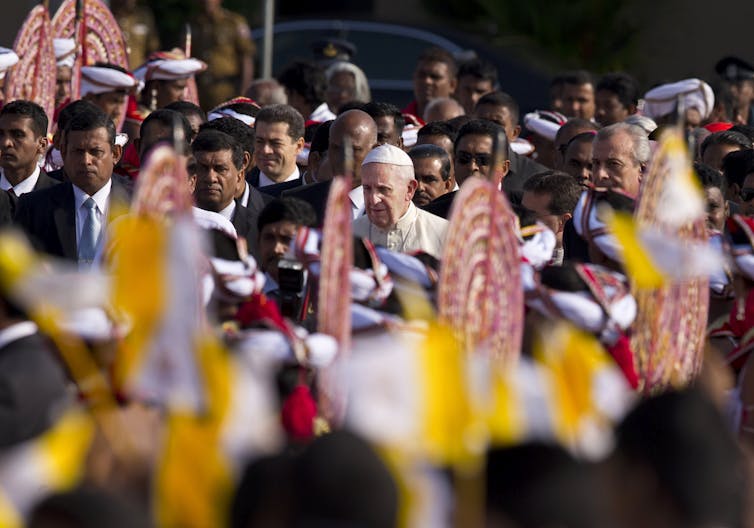
Pope Francis in Colombo in 2015.
AP Photo/Saurabh Das
There is also an internationally known healing and prayer center, Kudagama, northwest of the Buddhist holy city of Kandy.
Sri Lankan Catholics have also become prominent in global Catholicism. The cardinal archbishop of the capital Colombo, Malcolm Ranjith, was mentioned as papabile, or candidate for pope, prior to the conclave that eventually elected Pope Francis.
Protestants of Sri Lanka
Sri Lanka’s Protestant community is quite small, constituting only 1% of Sri Lanka’s population. Like Catholicism, it was through colonialism that Protestant Christianity gained a foothold on the island. With Dutch traders and governmental officers came Calvinism and Protestant missionaries who worked in Sri Lanka’s coastal areas.
While Calvinist Protestantism declined under British colonial rule, there was a revival in the Tamil-speaking northern areas of the island. The American Ceylon Mission began in 1813 and established a number of medical dispensaries and schools. Jaffna College, opened in 1872, remains an important Protestant educational institution that still has ties to America.

St. Sebastian’s Church, the site of a blast, in Negombo.
AP Photo/Chamila Karunarathne
The churches in Negombo, where I did research work and where one of the attacks took place, are beautiful Renaissance and Baroque-style structures that are centers of activity throughout the day. Not only are there daily masses, but Catholics often come to light candles and pray to the saints. During worship ceremonies, women wear veils as was the Catholic tradition in the West until the mid-20th century.
Shrines to the Virgin Mary are a common sight on Negombo’s roads along with arches decorated with coconuts, which are the usual markers of a parish festival and procession. In honor of this Catholic culture, Negombo is popularly called “Little Rome.”
But now this “Little Rome” – with its beautiful churches, beaches, and lagoon – will also be known as the site of a horrific act of anti-Christian violence.
Mathew Schmalz, Associate Professor of Religion, College of the Holy Cross
This article is republished from The Conversation under a Creative Commons license. Read the original article.
Why Trump's recognition of the Golan Heights as Israeli territory matters

Israeli Prime Minister Benjamin Netanyahu, center, Republican U.S. Sen. Lindsey Graham, left, and U.S. Ambassador to Israel David Friedman, right, in the Israeli-held Golan Heights on March 11, 2019.
Ronen Zvulun/Pool via AP
Dina Badie, Centre College
Responding to pressure from the Israeli government, President Donald Trump has signaled via Twitter that his administration is poised to recognize Israeli sovereignty over the Golan Heights.
This change of posture over a highly disputed and strategically valuable territory between Israel and Syria is being met with delight, disapproval and indifference by various sides in the broader Arab-Israeli conflict, echoing reactions to an earlier U.S. move – to treat Jerusalem as Israel’s capital.
As a scholar who teaches and writes about the Middle East and is currently writing a book about the Arab-Israeli conflict, I can put the Trump administration’s controversial decision in historical and legal context.
The Arab-Israeli conflict
Israel seized five territories from three countries during the 1967 War: the Gaza Strip and Sinai Peninsula from Egypt, East Jerusalem and the West Bank from Jordan, and the Golan Heights from Syria. The UN Security Council responded by passing the so-called “land for peace” resolution, or Resolution 242, which envisioned Israel exchanging the occupied territories for peace and recognition from surrounding Arab states. All members of the UN Security Council approved the resolution, including the United States.
Prior to the 1967 War, about 150,000 Syrians lived in the Golan Heights, but many were displaced by the conflict. Today, the territory is home to about 25,000 Druze Arabs who overwhelmingly see themselves as Syrian citizens and roughly 20,000 Jewish settlers who identify as Israelis. The status of the territory’s residents, all of whom have been eligible for citizenship since 1981, is not subject change at this point.
At the end of the war, the two sides of the conflict disagreed on who should act first. The Arab states refused to negotiate until Israel withdrew from the occupied territories, while Israel refused to withdraw until the Arab states negotiated a peace deal. As a result, Israel continued to occupy the five territories and constructed settlements on them shortly after the war concluded.
In 1973, Egypt and Syria launched a war against Israel, advancing into the Sinai Peninsula and Golan Heights in an effort to recapture the occupied territories. With American help, Israel succeeded at retaining control over the territory.
At the end of the conflict, the U.S. mediated talks between Israel, Egypt and Syria in an effort to resolve the continued territorial disputes. Later, the Camp David Accords formally returned the Sinai Peninsula to Egypt in exchange for peace, in accordance with Resolution 242. But the remaining four territories, including the Golan Heights, remained under Israeli control.
In 1981, the Israeli government declared it was annexing East Jerusalem and the Golan Heights, permanently extending its own boundaries to cover the two captured territories. In response, the UN Security Council passed Resolution 497, which condemned the annexation of Syrian territory, declaring it a violation of international law.
Israel and Syria have engaged in several rounds of negotiations over the Golan Heights, including secret talks as recently as 2010 that would have resulted in full Israeli withdrawal. The start of the Syrian civil war in 2011 cut those negotiations short.
Nonetheless, Syria continues to demand a full return of the Golan Heights. No other country has recognized Israeli claims to the territory until now.
A strategic asset
The whole territory is about 40 miles from north to south, and an average of 12 miles from east to west. Despite being roughly the same size as Jacksonville, Florida, the Golan Heights is a strategically valuable high-altitude plateau that overlooks Syria and the Jordan Valley. It is considered militarily significant for both Syria and Israel, and Israel also considers the territory a “buffer-zone” that contributes to its self-defense.
In addition to its military value, the Golan Heights is also a strategic asset due to its water resources and fertile land. The area houses the Jordan River’s drainage basin, Lake Tiberias, the Yarmuk River and underground aquifers. Israel extracts a third of its water from the Golan Heights. In a relatively parched region of the world, control over the Golan’s water supplies is invaluable.
The Golan Heights may also have oil. Exploratory drilling suggests that the territory’s reservoirs could potentially yield billions of barrels.

Map of Israel and its neighbors, including occupied territories.
Wikimedia
Political calculations
Trump is popular in Israel, particularly after recognizing Jerusalem as Israel’s capital and relocating the American embassy there from Tel Aviv. Prime Minister Benjamin Netanyahu is currently using the American president’s photos in his re-election campaign posters to take advantage of this.
In fact, some analysts and reporters have suggested that the timing of this announcement was politically calculated to bolster Netanyahu’s campaign in the upcoming Israeli elections on April 9.
I expect that the decision to recognize Israeli sovereignty over the Golan Heights will run into the same difficulties that afflicted the Trump administration’s change in policy with regards to Jerusalem for two reasons.
First, it reverses decades of consistent U.S. policy that demanded any territorial recognition come as a result of direct negotiations, rather than unilateral declarations. Second, it runs counter to international law, which does not recognize Israeli sovereignty over territories occupied during the 1967 War.
To be sure, Trump’s move is a symbolic, rather than legal, gesture. But given the dimensions of America’s global influence, U.S. recognition could lend some legitimacy to Israel’s controversial annexation policy.
And I believe Trump’s approach to contentious issues in the Arab-Israeli conflict will further undermine the U.S. government’s claim to be an honest broker. In my view, it makes peace in the Middle East less likely.
Dina Badie, Associate Professor of Politics and International Studies, Centre College
This article is republished from The Conversation under a Creative Commons license. Read the original article.
Henry Aladiume Reports
 |
| Mr.Donald Trump ,President of The United States |
 |
| Mr Barack Obama, The 44th President of the United States |
Is Jim Acosta A Journalist Or A Left Wing Activist ?
The Internet and Scourge of Fake News
In a recent Facebook post a Nigerian Journalists, Mr.AbdulRafiu Lawal contented that apart from corruption, that the scourge of fake news would be next factor could that could stoke social strife in Nigeria.Mr Lawal explained that a pointer to this trend in Nigeria is the report of how fake news inspired violence in three girls school in the northern city of Damaturu, in Yobe state ,Nigeria in November,2018.He added in his post that fake news could even worsen the tense situation in parts of northern Nigeria, where radical Islamist's are battling government forces.
Google and Facebook are innovative technology entities built on the internet, but in comparison ATT in spite of its recent acquisitions remains largely a digital corporation built on a legacy telecommunication infrastructure. Currently Google and Facebook control nearly 60% of advertising spend in the US but with their innovative approaches, AT& T will have a difficult task mounting a challenge especially regarding online advertising revenue.
https://www.youtube.com/channel/UCFhV_rSl1O9osRVmcpObEbg? view_as=public (My YouTube Channel)
Flickr, CC BY 2.0, https://commons.wikimedia.org/w/index.php?curid=3460064




















No comments:
Post a Comment
Share your opinion